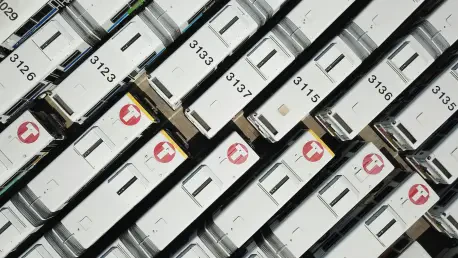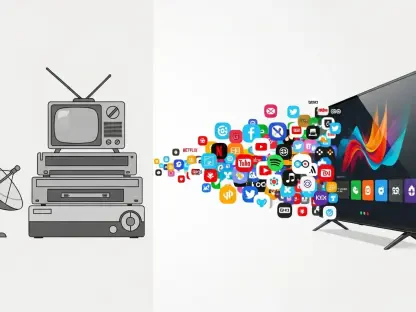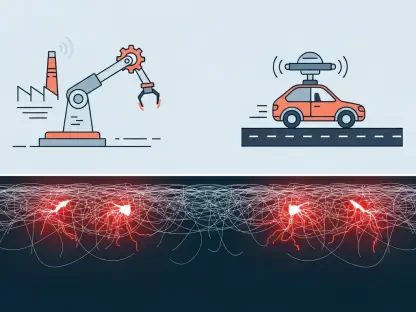I’m thrilled to sit down with Vladislav Zaimov, a seasoned telecommunications specialist with deep expertise in enterprise telecommunications and risk management of vulnerable networks. With years of experience in navigating the complexities of connected systems, Vladislav is the perfect person to guide us through the transformative world of telematics and its pivotal role in modern fleet management. In our conversation, we explore how telematics has evolved from a supplementary tool to a cornerstone of business strategy, the challenges of scaling and securing these systems, the importance of connectivity and precision, and the innovative solutions driving this industry forward.
How has telematics transformed in recent years, and what does it mean for fleet management today?
Telematics has undergone a remarkable shift. It used to be seen as a bonus feature—something nice to have for tracking vehicles or basic route planning. Now, it’s a fundamental part of fleet management, woven into the fabric of business operations. It’s about real-time data on vehicle location, driver behavior, and asset condition, which helps companies cut costs, stay compliant with regulations, and meet customer demands for transparency and speed. This transformation is driven by the need for efficiency and accountability in an increasingly competitive landscape.
What do you see as the main factors fueling the explosive growth of the telematics market, projected to rise from $16.9 billion in 2020 to $64 billion by 2030?
The growth is staggering, and it’s largely due to a perfect storm of technological advancements and market demands. Industries like logistics, delivery services, and even public sector fleets are adopting telematics at a rapid pace to optimize operations. Technologies such as IoT, cloud computing, and enhanced connectivity options are making these systems more accessible and powerful. Plus, there’s a growing focus on sustainability—telematics helps manage electric vehicle fleets efficiently, which is a big driver as more companies go green.
Why has telematics become such a critical discussion in corporate boardrooms for fleet-operating companies?
It’s simple—telematics directly impacts the bottom line and operational integrity. Executives are seeing how it delivers measurable benefits like reduced fuel costs, improved driver safety, and better compliance with ever-tightening regulations. It’s also about customer satisfaction; real-time tracking means you can provide accurate delivery ETAs, which builds trust. When you can show hard data on cost savings and risk reduction, it’s no longer just an IT project—it’s a strategic priority that gets boardroom attention.
Scaling telematics from a small test to a massive deployment sounds daunting. What are the biggest obstacles in managing tens of thousands of vehicles?
Scaling is indeed a challenge. One major hurdle is the sheer complexity of managing diverse hardware and software across different regions. Manual setups and varying configurations can lead to chaos—think spreadsheets trying to track thousands of devices. Then there’s the logistical nightmare of ensuring consistent connectivity and updates. Without a unified system, you’re stuck with inefficiencies and spiraling costs. It’s a real test of planning and infrastructure to make that leap without losing control.
How do modern solutions help overcome these scaling challenges in telematics deployments?
The key is adopting scalable, automated systems. Cloud-native device management allows for centralized control, so you’re not manually configuring each unit. Technologies like eSIM profiles that auto-configure on startup and integrated SIM solutions for out-of-the-box connectivity are game-changers. They reduce human error and make it easier to manage global fleets with different network requirements. These tools streamline the process, keeping complexity and costs in check even at a massive scale.
Connectivity issues in areas like tunnels or rural regions can disrupt fleet visibility. How are today’s telematics systems addressing these gaps?
Connectivity blind spots are a real pain point, but modern systems are getting smarter. They combine multiple technologies—satellite, Wi-Fi, and cellular signals—to ensure data capture even in tough spots. If a vehicle goes offline, these devices store data locally and transmit it once a connection is back. This hybrid approach means fleet managers don’t have to guess what happened during a blackout; they get a complete picture, which is crucial for audits and customer trust.
Security is often cited as a major concern in telematics. Can you walk us through the types of data at risk and how to protect them?
Absolutely, security is non-negotiable. Telematics systems handle sensitive info like driver behavior patterns, customer delivery details, and detailed route histories. If compromised, this data can lead to privacy breaches or operational disruptions. Hardware-based security, paired with dedicated chipsets for secure boot and encrypted storage, offers a robust defense. These measures ensure devices are tamper-resistant and can receive secure, lightweight updates, minimizing vulnerabilities even in large-scale setups.
Power consumption is a growing issue, especially for electric vehicle fleets. Why is minimizing energy use in telematics devices so important, and how is it achieved?
Power efficiency is critical, especially with electric vehicles where every watt counts toward range and performance. Telematics devices, even when hardwired, can drain batteries if not optimized, which impacts vehicle uptime. Modern designs focus on low-power operation and smart filtering, so the device only activates for significant events. This cuts down on unnecessary power use and false alerts, ensuring the system supports the fleet without becoming a burden on resources.
There’s a rising demand for ultra-precise location tracking in telematics. Can you explain why lane-level accuracy matters and how it’s being achieved?
Lane-level accuracy is becoming essential for applications like accurate billing, safety incident analysis, and delivery verification. Knowing exactly which lane a vehicle was in can make a huge difference in disputes or investigations. Sensor fusion technology is the key here—it blends data from multiple satellite systems, Wi-Fi, and cellular signals to pinpoint location without needing extra hardware. This approach delivers high precision, often down to a meter, which is a game-changer for reliability and trust in fleet operations.
Looking ahead, what is your forecast for the future of telematics in fleet management?
I see telematics becoming even more integral as transportation continues to evolve. We’re moving toward fully autonomous fleets and smarter cities, where telematics will act as the backbone for real-time decision-making. Security and scalability will remain top priorities, but I also expect breakthroughs in AI to analyze telematics data for predictive insights—like anticipating maintenance needs before a breakdown. Fleets that invest in resilient, future-proof systems now will be the ones leading the charge in efficiency and innovation over the next decade.









